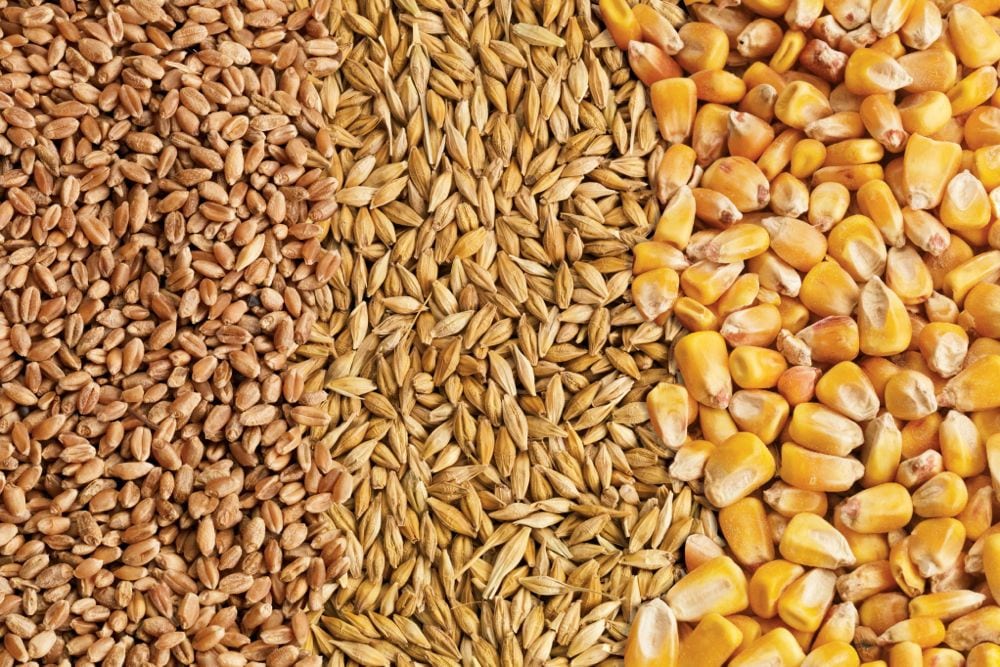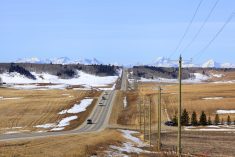The highway southwest of Addis Ababa to Wolayto-Soddo is wide and smooth, but there is no such thing in Ethiopia as setting the cruise control and just cruising, as one would expect to do on the wide open Canadian Prairies.
With nearly 80 million people, Ethiopia is densely populated and most of its people live as subsistence farmers in rural areas. We share this highway with other users, including a steady stream of pedestrians and livestock — cattle, goats, sheep and the poor-man’s B-train, the donkey, carrying everything from bags of grain or firewood to containers filled with water, to furniture.
Read Also

Feed Grains Weekly: Good export demand pushing up domestic prices
Prices for feed barley and wheat have been trending higher lately, said analyst Jerry Klassen of Resilient Capital in Winnipeg.
As Sam Van der Ende, the Canadian Foodgrains Bank’s field co-ordinator, deftly manoeuvres us through the traffic, at times forced from highway speed to a complete stop for a wayward donkey or zebu (bovine) that refuses to budge, it becomes clear that safe travel here requires keen intuition for the meandering unpredictable flow — and a good horn. After all, if a pedestrian or livestock gets hit by a vehicle, under Ethiopian law the driver is automatically responsible.
One of the members of our group, Al Friesen, of Radio Southern Manitoba, observed that whereas drivers in North America use their vehicle’s horn as a form of aggression, in Ethiopia it is used to announce, “I am here.”
We are travelling a day’s drive southwest of Addis Ababa to into a district that is known in food-aid circles as the Green Famine Belt. While not lush, there is green growth in the fields and hillsides, forested hillsides and water running in the streams.
Green isn’t a colour usually associated with famine. From the roadside, at least, it looks like a reasonably productive area.
Yet many of these families are not more than a month or two away from not having enough to eat at any given time, a factor of their grinding poverty, the region’s high population density and an increasingly variable climate.
It’s why for several years the Canadian Foodgrains Bank has been involved in the region through its Canadian partners, World Relief Canada and Evangelical Missionary Church, and the two locally based Kale Hewyet Church branches. Through cash-for-work and food-for-work projects, the families most at risk of running out of food are able to receive support while working on projects that benefit the community.
These projects tend to be oriented toward soil conservation through terracing erosion-prone hillsides and reforestation, as well as road maintenance. And because there is never enough aid to go around, the potential project participants are selected after a complicated exercise in community consensus.
The families most in need are identified by government and community leaders, but then the finalists are chosen by a community meeting. If picked, the household must supply labour to the project in exchange for 75 kilograms per month of maize, if it is a food-for-work project, or 242 Ethiopian birrs (C$13.92) per month.
Although people can have long-term tenure in Ethiopia, and land can be passed from generation to generation, they don’t own their land outright — so it cannot be bought and sold. As families grow, their land parcels shrink and their capacity to acquire more through leasing is limited. The pressure on the common grazing areas becomes more intense and the pressure unsustainable.
The growing landlessness is made worse by the weird weather the region has been experiencing. Some call it climate change, but whatever you choose to call it, it’s wreaking havoc with local food security.
The rains on which people depend for growing food have become increasingly unpredictable. Whether those rains come too early, too late, or not at all, they are a recipe for hunger.
“A better job”
Bekele, a farmer we met in the hills outside of Soddo in the Wolayta district, told us Monday he’s still waiting for the January rains to come — rains that tease his sweet potato crop into producing tubers. He’s running out of time.
With two wives and three children to support, Bekele said that if the sweet potato crop failed, he would sell one of the family’s two heifers to buy food to tide them over, hopefully until the next harvest.
It’s this kind of survival strategy that food aid agencies hope to prevent. Livestock are assets, at once representing a family’s relative wealth and its savings account. Once it starts selling assets in order to eat, they are predisposed to a free fall further into poverty.
Many of the farmers we’ve met over the past several days farm a hectare or less of land. Even in a good year, they are barely producing enough maize, sweet potato and haricot beans to feed their families much less have leftovers to sell for cash.
If the weather doesn’t co-operate, they can quickly be thrown into a food crisis.
Support from either government or non-government agencies can help tide them over, but no one is fooled, least of all the project participants, into thinking it is a long-term solution.
The search is on for ways to achieve higher levels of productivity, make it possible for these farmers to acquire more land, and develop alternative sources of income.
Simon Lema, a 45-year-old farmer in the Damat Wodye district south of Wolayata Soddo, said his dream for his eight children is for all of them to get an education. “I am not thinking they will stay on small land,” he said. “I expect if I send them to school, I hope they will get a beter job.”
— Laura Rance is the editor of the Manitoba Co-operator, reporting this week from Ethiopia on a media food study tour with the Canadian Foodgrains Bank. Watch this site this week for updates on her travels.















